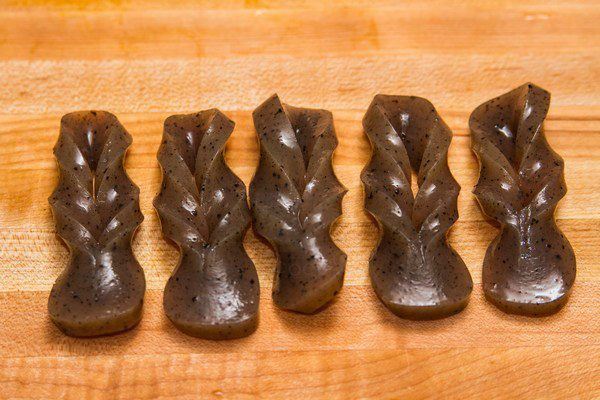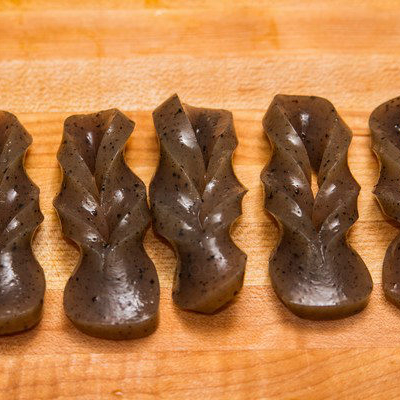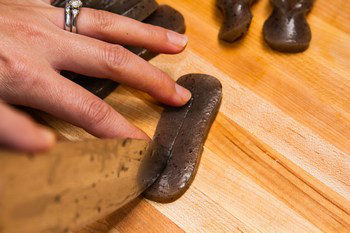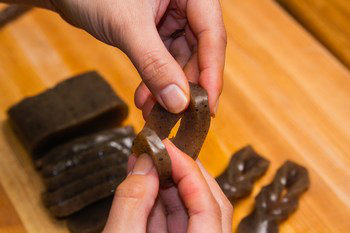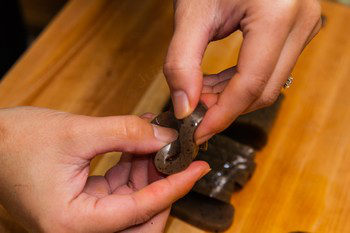Tazuna (手綱) means “reins” in Japanese. You can make Tazuna Konnyaku (手綱こんにゃく) that resemble narrow-strap horse reins with interweaved braids. With one simple incision, you can make this decorative style of konnyaku (konjac yam cake) to use in simmered dishes and stews like Oden and Chikuzenni.
What is Konnyaku?
Konnyaku (こんにゃく) is a Japanese food product made from konjac or devil’s tongue, a yam (taro) in the genus Amorphophallus. This ingredient has a gelatinous and rubbery texture. It’s gluten-free, high in fiber, and comes in two varieties, either gray with specks or white. It’s also a flavorless food with almost no calories, sugar, fat, or protein. On the flip side, it’s great at soaking up the flavors of simmering broths, many of which are made with cooking sake, mirin, sugar, and soy sauce. You can read more about this ingredient in my konnyaku pantry post.
How Do We Use Tazuna Konnyaku?
Japanese cooks add konnyaku to various Japanese foods for its bouncy texture. We use tazuna konnyaku in Chikuzenni (Nishime), a dish of simmered root vegetables and chicken that originated in Fukuoka prefecture in Kyushu. This classic dish is made with chicken thigh, shiitake mushroom, lotus root, taro (satoimo), bamboo shoot, burdock root, konnyaku, carrot slices, snow peas, and toasted sesame oil. Chikuzenni is a home-cooking staple served as a side dish and packed in bentos because it tastes great at room temperature. It’s also an important dish for the traditional Japanese New Year‘s Day feast of Osechi Ryori (おせち料理) to wish for prosperity, happiness, and good health in the coming year.
